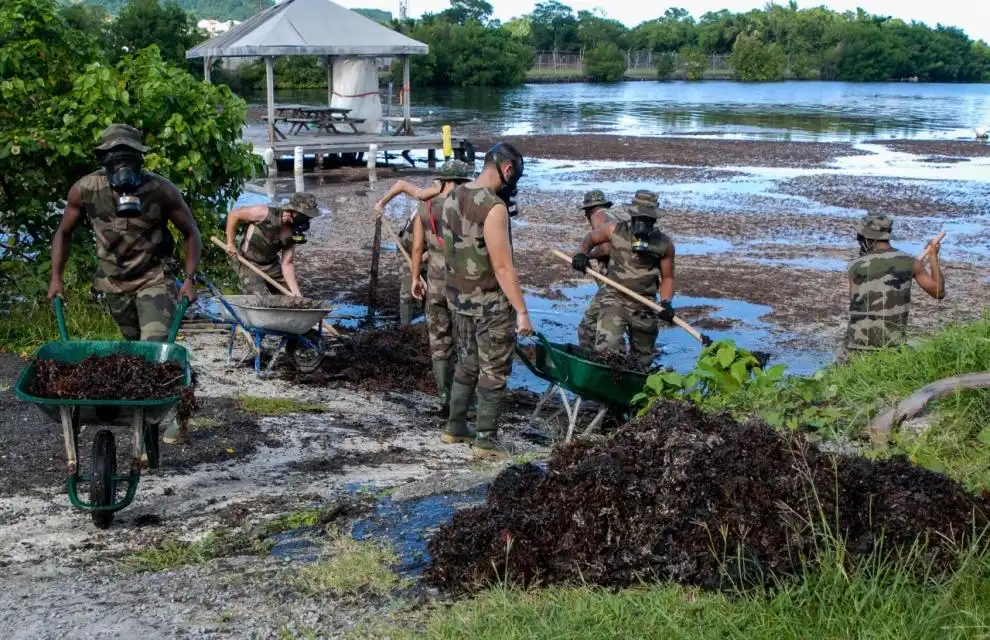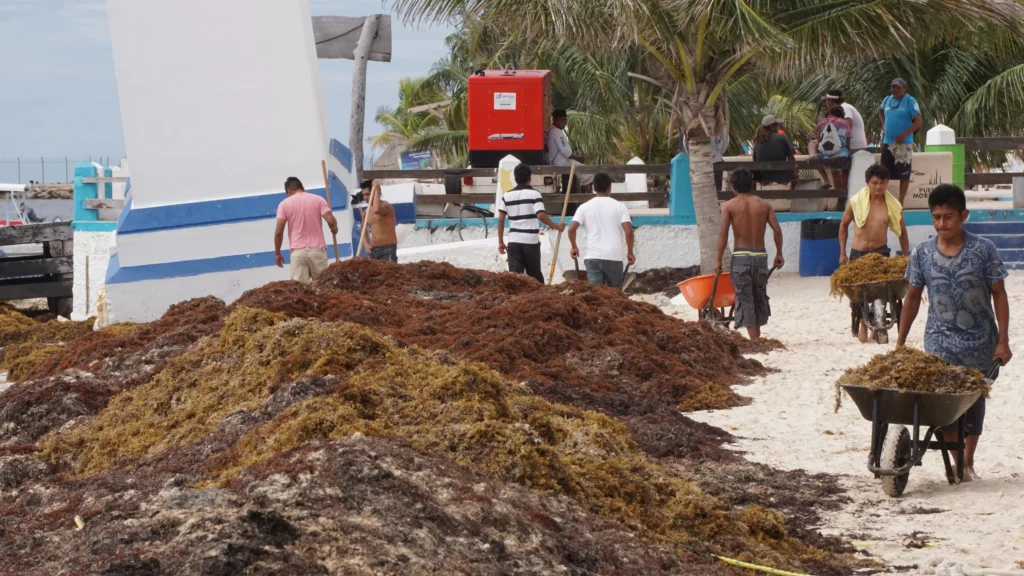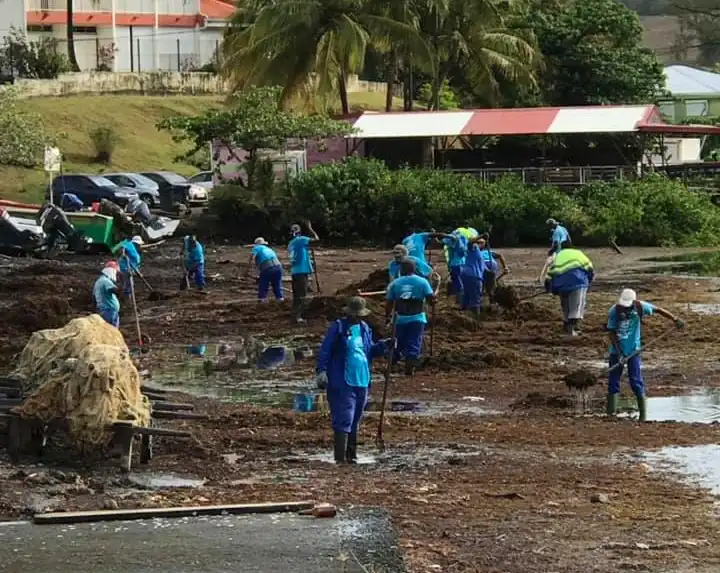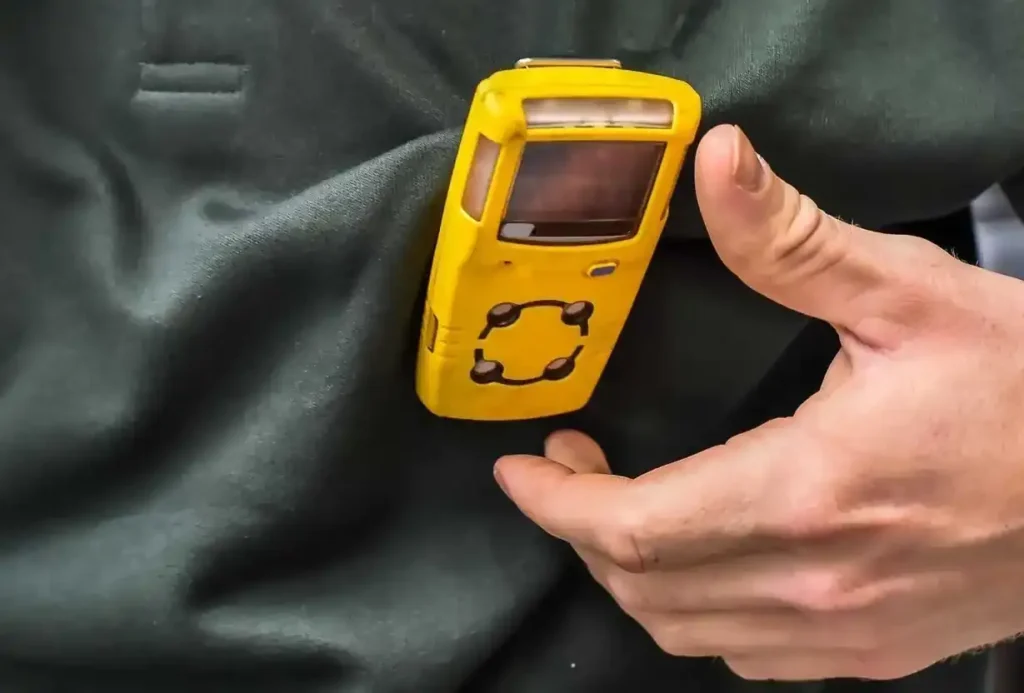
Photo of the French army coming to pick up sargassum in 2018 –
7 ppm of H₂S Measured on a Sargassum Pile in Playa del Carmen: A Concerning Level
A recent scientific report filmed in Playa del Carmen, Mexico, revealed a concentration of 7 ppm of hydrogen sulfide (H₂S) measured directly above a sargassum pile. This toxic gas, naturally released during the decomposition of the algae, can pose serious health risks, even at low levels.
What Does This Level Mean ?
H₂S is an invisible gas with a rotten egg odor, which disappears at higher concentrations by paralyzing the sense of smell. At 7 ppm, several international safety thresholds are exceeded:
- TLV-TWA (ACGIH): 1 ppm over 8 hours
- STEL (ACGIH): 5 ppm over 15 minutes
- NIOSH: Ceiling of 10 ppm
- OSHA: Limit for workers 20 ppm, max peak 50 ppm under 10 min
- IDLH: 100 ppm (immediate danger to life or health)
What Happens in the Field ?
A study in Puerto Morelos (Mexico) shows:
- 23% of readings >5 ppm, with peaks over 100 ppm
- At 10 m distance, values drop below 0.1 ppm in 90% of cases, but gas plumes remain unstable
These data confirm the risk is highly localized but serious, especially for sargassum collectors, nearby residents, and children.

What Does the French ANSES Recommend ?
France’s ANSES provides a detailed framework for H₂S exposure:
- 0.2–1 ppm: public information, rapid sargassum collection
- 1–5 ppm: vulnerable people should avoid the area
- >5 ppm: restricted access for trained professionals with gas detectors, household exposure monitoring recommended
For workers, ANSES requires:

- Personal H₂S gas detector near breathing zone
- Protective gear (gloves, boots, filtering hood or mask from 10 ppm)
- Mechanical collection, mandatory training and exposure tracking
The agency also stresses the need for further research on the chronic toxicity of H₂S and the ecological impact of sargassum.
Practical Recommendations
- Alert the public immediately when piles form or odors are noticeable (>0.2 ppm)
- Avoid prolonged accumulation: fast collection = lower gas levels
- Protect workers: H₂S detectors, filtering masks from 5 ppm
- Restrict public access when levels exceed 5 ppm
- Monitor zones regularly
- Train and track all field exposure
Why Act Now ?
Symptoms such as eye and respiratory irritation, headaches, nausea, and discomfort occur commonly at 5–10 ppm. Studies in Martinique show increased medical consultations among people living near massive sargassum landings with chronic exposure. In some areas, exposure can reach up to 50 days per year at concentrations between 0 and 10 ppm.
Key Takeaways
- 7 ppm of H₂S is a serious alert, above short-term safety limits for all
- This is a local public health emergency: rapid cleanup, protection, and coordination are essential

At Sargassum Monitoring, we call for the urgent implementation of harmonized safety thresholds, greater vigilance, and official recognition of this risk in all impacted regions. A united, coordinated response is essential.
Sources: ANSES, HCSP, ACGIH, OSHA, NIOSH, scientific studies from Mexico and the French Caribbean
